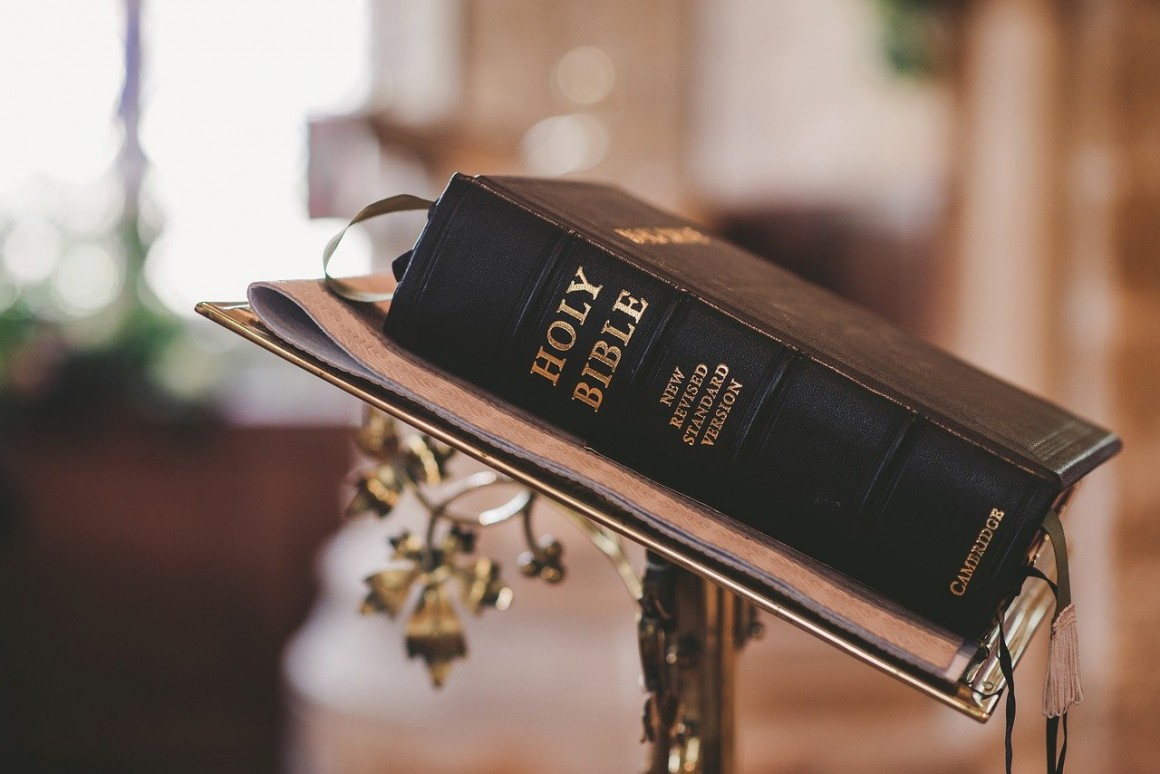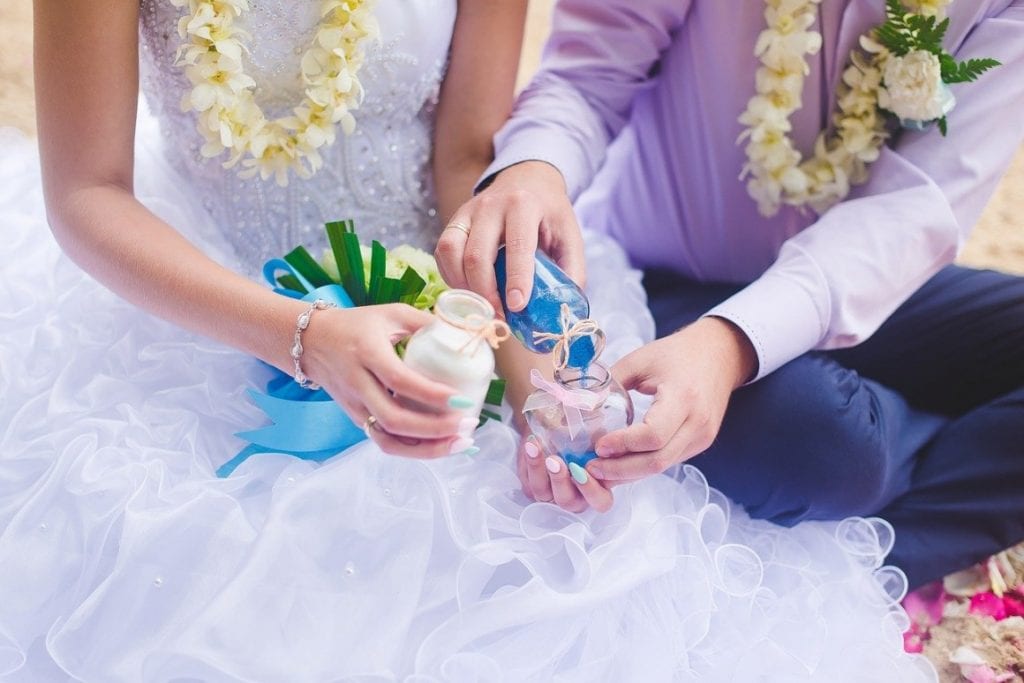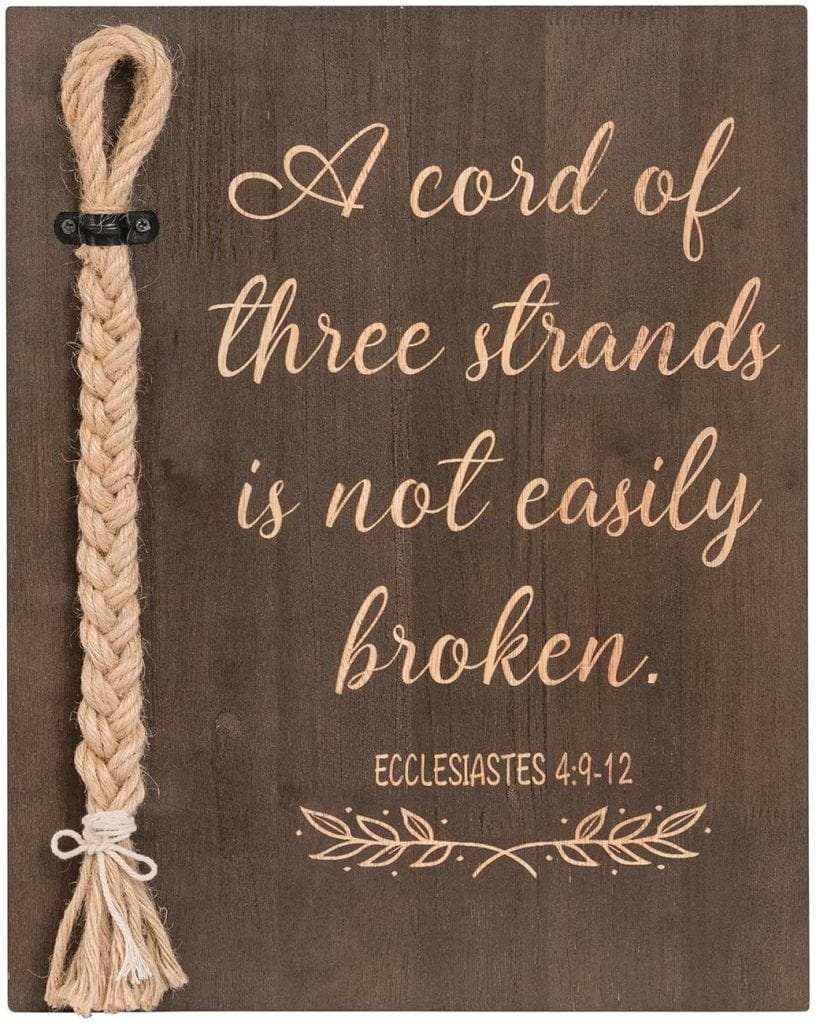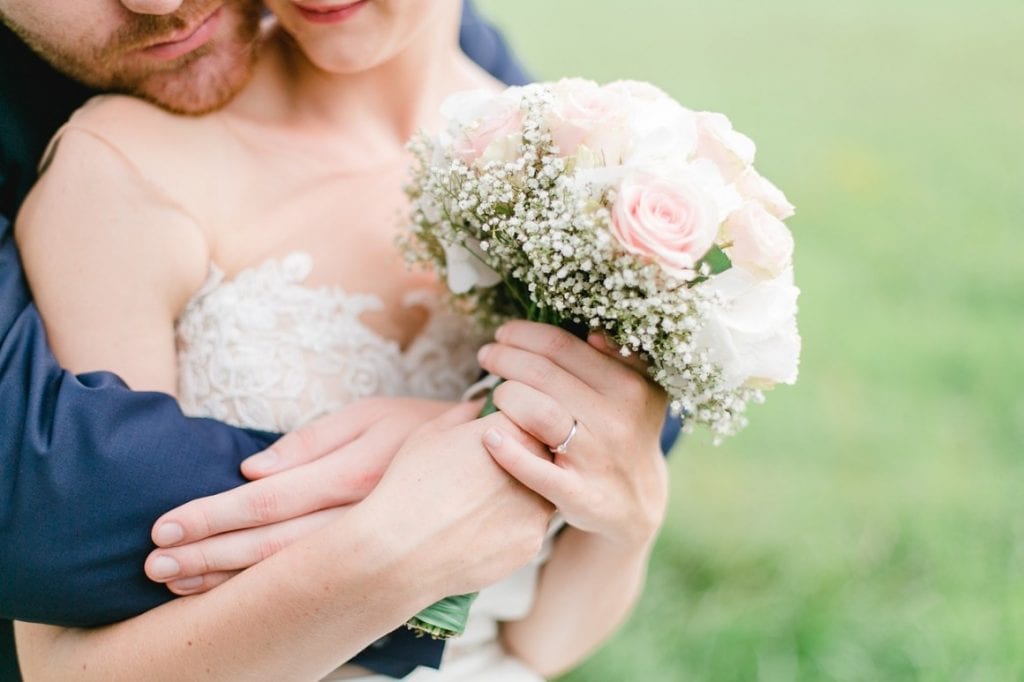As we live in a time of speed, we tend to do a lot of things in a hurry and say a lot of things we do not mean. This may even happen during the stages of wedding planning and preparation. But, of course, that trendy and tolerated habit should never apply to the vows of marriage.
But we digress. Once you are ready to walk down the aisle and marry your special someone, you should be able to master your words carefully and have them express your feelings as accurately as possible. Millennial phrases, pop culture references, or catchphrases of the now shouldn’t be something you use to fill up your airtime. Instead, the moment of the exchanging of vows should be so strong it can be felt by each and every one of the attendees. In short, the vows of marriage should include a short statement of the love you bear your spouse and a commitment to stick together, through good and bad, as long as you both shall live. It does not sound very complicated, does it?
Well, it may be if you don’t understand the true meaning – including all its traditional symbols and inclusions. Let’s learn a bit about them, shall we?
The Meaning & Symbols Behind Marriage Vows
The Intent & The Promise
When speaking of wedding vows as a whole, their intent and their promise is the lifelong commitment each partner is making in that moment. The intent behind the vows – the words spoken – is to map out all the ways in which they plan to uphold the marriage while the promise is that there is no expiration date to the unity of the pair.
Some vows are plucked from traditional lines that can be found in Biblical or religious materials whereas other couples may write their own – bringing their own unique promises, expectations, and personality to the moment.
The Unity Candle
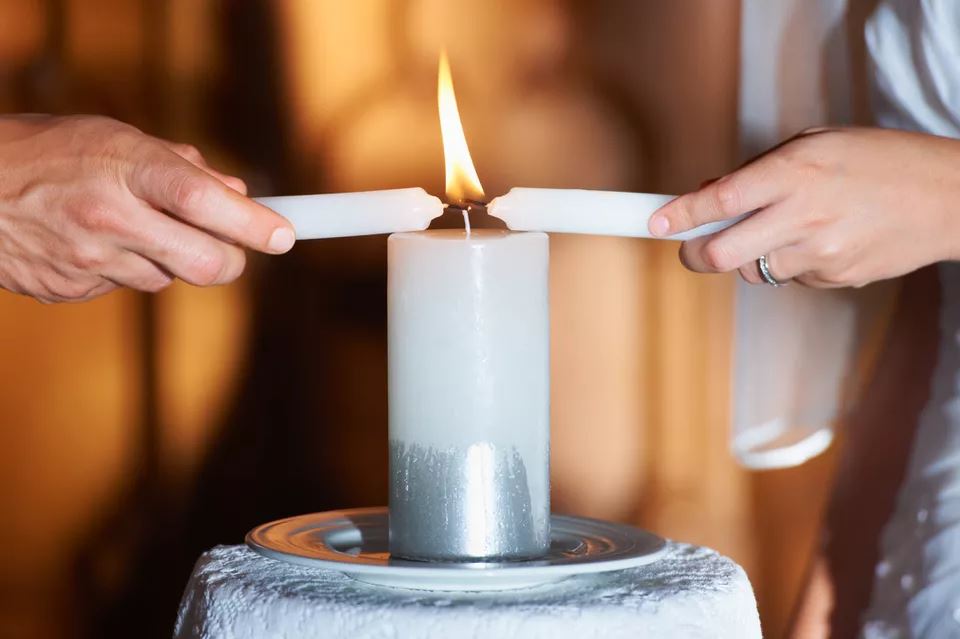
One of the most popular inclusions in contemporary wedding vow ceremonies is the lighting of the unity candle. But, what exactly does this symbolize? The meaning is actually quite simple; it acts as a tangible representation of two souls joining as one in marriage.
Two family candles are lit at the beginning of the ceremony. Those two family candles are then what – for example – the bride and the groom, use to light their unity candle. The combining of two families, the blending of two spirits, it’s a simple and beautiful way to add an extra visual layer to the union.
Furthermore, it’s been noted that some like to use the candle’s flame as a sign of the newlywed’s passion for one another.
The Sand Ceremony
Similar to its predecessor, the sand ceremony also symbolizes the new union. In fact, it’s just as well known and just as popular as the traditional unity candle custom. Instead of each partner coming together to light one candle, each partner in this formality comes together to pour sand – each vase signifying their respective families – into one container.
Once in a while, you may find that members of each side of the family pour a bit of sand into the newlyweds’ own vase as the processional moves forward.
The Left & Right of the Altar
Have you ever wondered why the bride, traditionally, seems to always stand to the left of the altar while the groom stands to the right? Well, some find the tradition rooted in quite the romantic gesture while others find it to be quite the outdated foundation.
Firstly, since your heart is found on your left side the bride is placed under her groom’s heart. Even more so, it leaves his mighty right hand free to defend her from an intruder who tries to steal her away (think in terms of medieval times when swords were the weapons of choice).
Despite the tradition and its history, we see more and more couples bucking the system and doing what feels right to them! Feel free to do the same during your vow exchange.
The Cord of Three Strands
If you are not familiar with the term “cord of three strands,” you may be familiar with the phrase “God’s knot” or “unity braid.” For those with Christian or religious beliefs, this part of the vow exchange marks unity between the bride, the groom, and God; each strand used as a symbol of the individual.
Traditionally, the groom will hold the metal ring that the three cords attach to while the bride braids the strands together.
The Jumping of the Broom
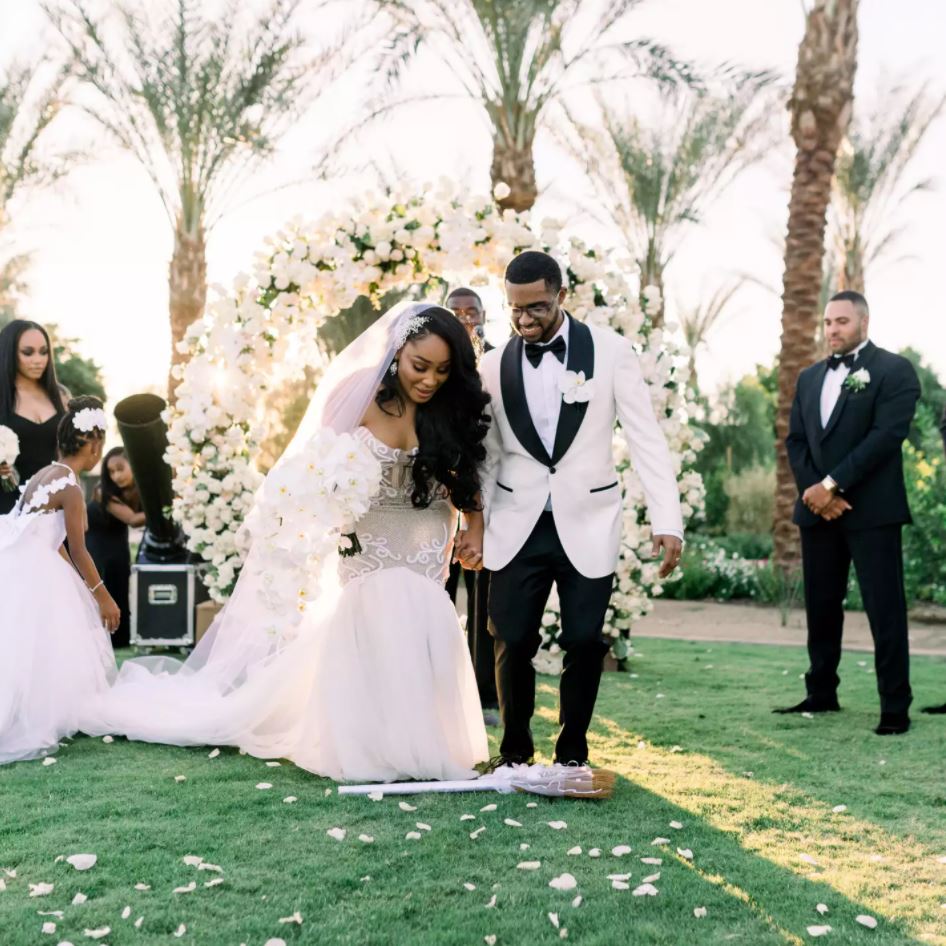
Have you ever seen a couple jump over a broom at the commencement of their vows? This ceremonial gesture is rooted in history and is a tradition that belongs to the Black community.
In some cultures, the broom symbolizes God, the bristles of the broom represent both sides of the nearly-new family, while the ribbon that’s tied around the handle creates the binding of the couple. And although there are plenty of stories behind the jump itself and its origin, here are a couple we find the most interesting and touching:
- In West African culture, the broom was used to ward on evil spirits. And starting off your wedding without demonic naysayers trying to impede seems pretty important.
- Throughout slavery in the U.S., brooms were on hand and since slaves could not legally marry, the jump over the broom was the act that bound the marriage.
Basically, this quick hop seals the deal and it continues to be incorporated into the vow exchange to pay homage to African heritage.
The Breaking of the Glass
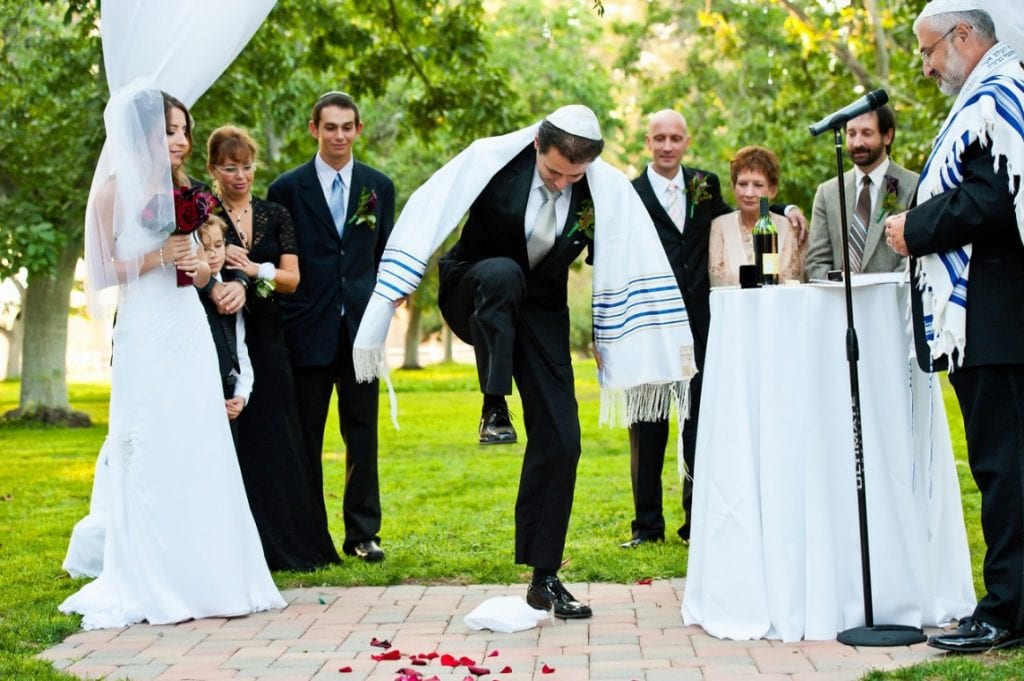
We move forward in our divulgence of meanings and symbols of marriage vows to our Jewish neighbors. Their vows include the breaking of the glass which also has its own unique symbolism.
When Jewish couples step on the glass at the end of their promises to one another, it marks the destruction of the Jewish temple in Jerusalem – a moment to pay homage and remember before the celebration really takes flight.
The Circling Ceremony
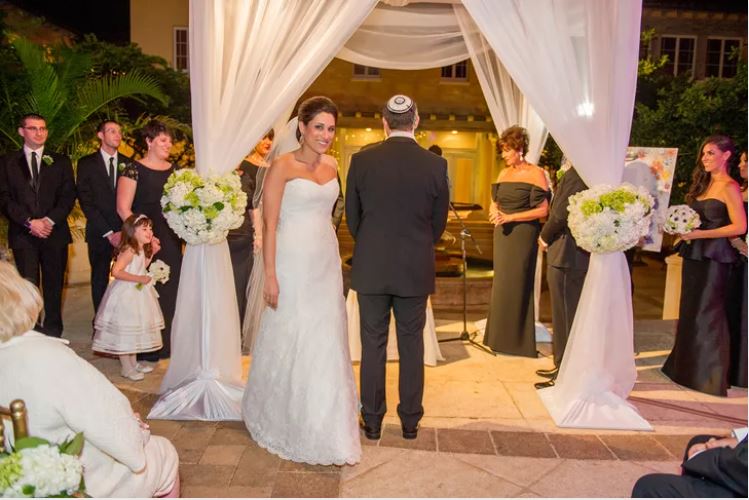
Another Jewish tradition comes in the form of “circling” or the Ashkenazi, which is when the bride circles the groom 3-7 (seven known to represent the seven revolutions the earth made during the seven days of creation) times under the traditional chuppah. It’s said that this ritual creates a wall of protection around the marriage from evil spirits and temptation.
The Traditional Spoken Words
What are they? Well, you may have heard a phrase or two that goes a little something like this:
“I, ___, take you, ___, for my lawful wife/husband, to have and to hold from this day forward, for better, for worse, for richer, for poorer, in sickness and health, until death do us part.”
“I, ___, take you, ___, to be my husband/wife. I promise to be true to you in good times and in bad, in sickness and in health. I will love and honor you all the days of my life.”
There are several variations and editions of these traditional spoken words, but these particular vows are rooted in Christian faith. But did you know that these promises aren’t necessarily found written out in any Bible? Instead, they’re written to reflect basic biblical principles or beliefs in what a marriage should be. This is why you can mix and match your vows to echo your couple’s style and vision.
The Rings
And finally, the most popular symbol of a marriage and of your vows are the rings. When you exchange vows, the visual (and wearable) aspects come in the form of these two pieces of circular metal. But what do they actually mean besides the fact that you are married?
Because a circle never ends, the ring is the perfect symbol for an eternity – or never-ending – love and commitment. It’s also known that there’s a vein in your left ring finger that connects to our hearts, which seems to be the most perfect place to flaunt it. The ring truly is the tangible promise that the couple chose to make on the day they said their I do’s.


